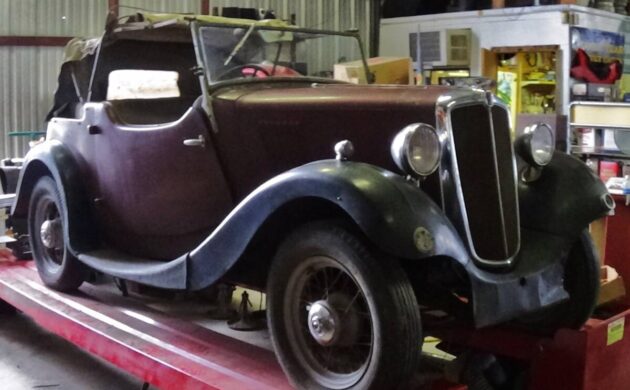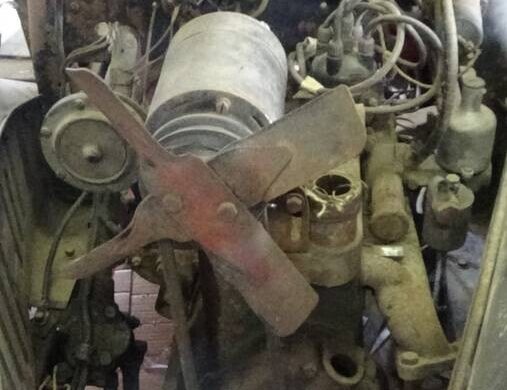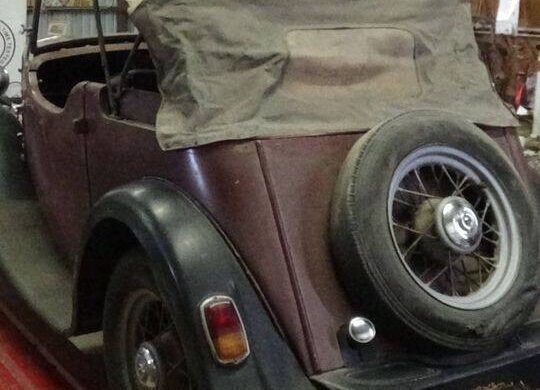UPDATE 04/23/2023: Selling a classic car can be challenging, especially when the vehicle caters to a niche market. Such is the case with this 1937 Morris Eight Two-Seat Tourer. It is a rare little beast because even though the company produced 164,102 examples across all body styles in 1937, less than 15% were ordered in Two and Four-Seat Tourer form. The details of this Morris remain unchanged, including the price of $8,000, as seen in December 2022. It is listed here on Craigslist, and I must say a big thank you to Barn Finder Kyle K for spotting the relisting of this rare British gem.
12/14/2022: William Morris began making cars in 1913 after a stint as a cycle mechanic. He evolved his company under a philosophy of assembly using other makers’ components versus Henry Ford’s all in-house components manufacture. This “buy-in” model led to efficiencies and rapid scale; by 1926, Morris Motors was responsible for over 40% of British auto production. It had, by then, actually purchased many of its component makers. The Great Depression sideswiped sales, but Morris had a trick up its proverbial sleeve. In 1932, Ford introduced the Model Y in the UK, which was selling well in the 8hp tax class. Morris didn’t perfectly copy the Model Y when introducing its Eight in 1935, but the resemblance is extraordinary. Meanwhile, the Eight had hydraulic brakes and an electric windshield wiper which the Y did not. Morris’s other rival – the Austin 7 – was not equipped even remotely as luxuriously as the Eight. The car is located in Shreveport, Louisiana. It was covered on Barn Finds last August with a price of $11,000. This tip is courtesy of Matt R. – thanks!
Morris Eights utilize a 918 cc in-line four-cylinder side-valve engine. Power output is just over 23 bhp (though for tax purposes, as mentioned, it ranked at eight hp). The transmission is a three-speed manual. The theoretical top speed is 60 mph, but users report somewhat less. Apparently, with its four-speed, the later Series E more readily reaches highway speeds. A relatively wide track helps the car corner famously well. The seller says the motor does not run but does turn freely and is complete.
This ad has no decent interior photos – perhaps because there isn’t an interior – but door panels and seats that were once recovered are included for restoration. The dash has a decent complement of gauges and switches. Bumpers are also with the car. The seller says the shut lines are good, and the vehicle appears to have had one repaint.
This is the two-seat convertible tourer body style. Morris made 164,102 Eights, and 24,000 were tourers of either the two-seat or four-seat type. While this little car has a few drawbacks as a starter classic – non-synchro gearbox, parts availability challenges, right-hand drive – it also has some advantages: it’s not wildly expensive, it’s in decent condition already, it’s very simple, and there’s UK club help. I would love to see this long-stored car back on the road, albeit perhaps at a lower entry price. What about it? Could you see this one as your winter project?






Yes, the 8hp is a value derived from the archaic RAC horsepower rating, devised in 1910 by the RAC at the invitation of the British government. The formula is: D x D x n / 2.5
D is the bore diameter. The idea was to have an easily applied formula to tax more for bigger more powerful cars. it was important in how cars were designed and marketed so many cars of that ear named for their “nominal” tax hp. like “Morris 8” and “Austin 10”.
The unintended consequence of this is that British car manufactures at the time tended to design smaller-bore, longer stroke engines to help buyers have cheaper to tax cars – a trend that influenced customary engine design eve after the original tax classification had gone away….
An important unintended consequence of this formula was that it was suited to little England, but not export markets. So when markets opened, post WW2, whereas a VW Beetle, Fiat 1100 or Renault 4CV could run fast all day long in hot conditions, an Austin A30 or sidevalve Morris Minor could not.
Non running motor perfect for a swap to more modern Miata drive train although you know there will be the obligatory “ls swap” comment from some wise *ss
Great write-up Michelle. From this distance, with all parts, an undamaged body and a reasonable price… this looks like a fun project to me. You don’t need to go fast to have fun with a car like this.
Our English 39 Standard 8HP quite happily sits on 45MPH, of course as long as the road is flat.
If you wanted to restore and drive this car you could mothball the engine and transmission and put in something like an MGB drive train. Keeps it in the British family and gives you something to drive that won’t get you run over on the road.
I’m pretty sure that these little cars were the forerunner to the MG T series of “sports” cars.
“After a stint as a cycle mechanic.”
You do research better than that normally, Michelle! Morris´s “stint” began in 1893, became a leading UK manufacturer and racer of bicycles, started building motorcycles in 1901 and retailed several marques through Morris Garages soon after. Oxford has always been very prosperous, so the business grew quickly. That´s where the capital came from to be a serious car manufacturer from the start.
The first Morris car (nicknamed “Bullnose”) was the British Model T eqivalent, was the basis of the first MG (Morris Garages). Morris went on to build an empire with Morris, Wolseley and MG cars which competed with Austin until WW2. Austin was always old-fashioned and as you say, the Morris and Ford 8s were much better prospects. However, brand loyalty was strong and the Austin conservatism chimed strongly with the mores of1930s middle-class Britain (no-one below that class would have a car until after WW2).
Morris became Viscount Nuffield, died childless and bequeathed important trusts to the City and University of Oxford (there is a Nuffield College, Nuffield Hospital and Nuffield Press, for example). Another legacy is that the BMW Mini is still built on the site of the original Morris Cars factory. Downside was his ferverent commitment in the 1930s to promoting fascist and anti-semitic views….
This is a nice car, very good value at that price. Spares very cheap and easy from UK. Engine swaps etc? Pointless. Buy something you want instead!
Thanks, Martin. Sometime I want to look up what happened, if anyone knows, to the original bullnose Morris.
This could be a decent project if the price were lower. A non runner for $8K is a bit steep.
I own and drive one of these only left hand drive. Fun car as long as you don’t need to or want to go faster than 40 mph. easy to work on and most parts easy and cheep to get(except shipping). Pre war Morris club in England numbers about 2000 members.
My very first car was a 1948 Morris 8, my old man made me buy it off of my sister when I was 15 and had just got my drivers license. They wouldn’t go anywhere near 60 M.P.H. mine was flat out at 48 M.P.H. :) an old guy who had a 39 Chev coupe wanted to swap it for my Morris and the deal was done. I had always admired that Chev when I rode my bike to school.
Very interesting car. This would be a lot of fun on a warm summer day. You definitely wont see many at your local car show.
I have 8 Morris 8’s and 45 years of driving them. The idea of an MGB power train is a ticket to death at the first real bend. Crossply tires and narrow wheels were not fitted to an MGB!
I used to cruise mine towing a 5 cwt gross trailer on UK motorways at 55mph, with 4 adult passengers and a child. However they are no good on a gradient.